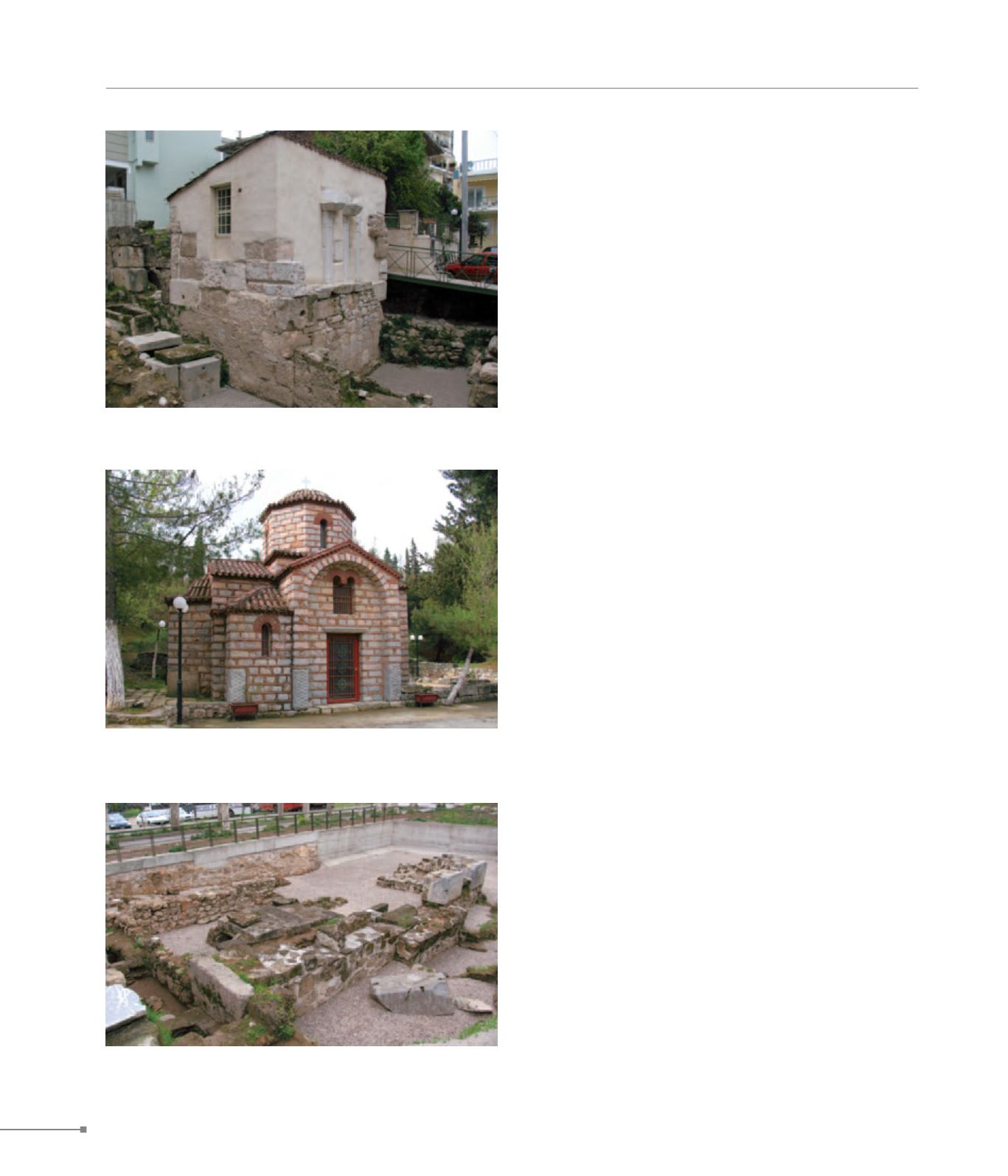
Arma.
Theba. Thebes.
CENTRAL GREECE
186
228. Theba, funerary chapel (Θήβα, ταφικό παρεκκλήσιο)
228. Theba, Aghia Photeine (Θήβα, Αγία Φωτεινή)
228. Theba, Aghios Gregorios (Θήβα, Άγιος Γρηγόριος)
227.
Arma.
Ancient acropolis whose walls were reused in the Byzantine
period. A Frankish tower survives at its E edge.
228.
Theba. Thebes.
Theba was a significant centre in the Early Christian and Byz-
antine periods, as well as during Frankish rule, and a bishop’s
seat since the 4th c. The city resisted Alaric’s raids in 396 AD,
while in the 6th c. the Kadmeia citadel’s walls were fortified,
according to Justinian. From Early Christian Thebes numer-
ous mansions with mosaic floors have been excavated. The
best-known is the mosaic with representations of the months
(5th c.), possibly from the basilica exhibited at the Museum of
Thebes. Part of the Early Christian basilica’s apse has been
uncovered next to the church of Saint Luke the Evangelist
at the city’s old cemetery. In the diaconicon of Saint Luke’s
church there is a marble Roman sarcophagus (2nd c.) with
epigrams (4th c.), in which it is believed that Saint Luke was
buried. It is possible that other Early Christian churches exist-
ed on the sites of subsequent churches. Excavations have re-
vealed a vaulted grave with wall-paintings within the Kadmeia,
cemeteries outside the Kadmeia, a catacomb with traces of
wall-paintings on the Kastellia hills, as well as bath complexes
within the walls.
From the 8th c. Thebes was capital of the theme of Hellas and
seat of the general. In the Mid-Byzantine period the city, a silk
production centre, reached its financial and social zenith. In
1147 it was conquered by the Normans and in the late 12th c.
by Leo Sgurus, lord of Nauplion and Argos, who was forced to
pass it to Boniface of Montferrat after the Fourth Crusade, so
it would be transferred to the Burgundian feudal lord Otto de
la Roche along with the remaining part of Boeotia, Attica, and
part of Locris. Thebes became capital of the duchy of Athens
and seat of the feudal lord. In 1311, after the defeat of Byzan-
tine Valtheros Bryennius in the battle of Almyros, the city was
conquered and plundered by the Catalan Company. A period
of looting and decline followed. In 1388 the city passed to the
Acciaioli family and Duke Antonio I, who was subjugated by
the Turks. Thebes was annexed to the Ottoman state in 1460.
Excavations have revealed parts of the Byzantine Kadmeia
walls that followed the pattern of the classical walls. A tower
of good height, part of the Byzantine fortifications, survives
at the site of the Thebes Archaeological Museum. More than
15 Mid-Byzantine churches have been discovered in excava-
tions. Some of the 13 towers dating from a later period were
built on the sites of earlier churches; none of them survives
intact. Within the Kadmeia walls the aisleless church of Aghios
Gregorios, built in 872, is highly distinctive. On the site of this
church part of the apse of a second small church has been
found. The cathedral of Panagia Theotokos (12th c.), the work


